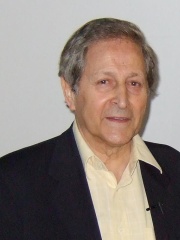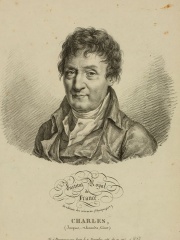PHYSICIST
Tsung-Dao Lee
1926 - 2024

 Tsung-Dao Lee
Tsung-Dao Lee
Tsung-Dao Lee (Chinese: 李政道; pinyin: Lǐ Zhèngdào; November 24, 1926 – August 4, 2024) was a Chinese-American physicist, known for his work on parity violation, the Lee–Yang theorem, particle physics, relativistic heavy ion (RHIC) physics, nontopological solitons, and soliton stars. He was a university professor emeritus at Columbia University in New York City, where he taught from 1953 until his retirement in 2012. In 1957, at the age of 30, Lee won the Nobel Prize in Physics with Chen Ning Yang for their work on the violation of the parity law in weak interactions, which Chien-Shiung Wu experimentally proved from 1956 to 1957, with her well known Wu experiment. Lee remains the youngest Nobel laureate in the science fields after World War II. He is the third-youngest Nobel laureate in sciences in history after William L. Bragg (who won the prize at 25 with his father William H. Bragg in 1915) and Werner Heisenberg (who won in 1932 also at 30). Read more on Wikipedia
His biography is available in 73 different languages on Wikipedia (up from 71 in 2024). Tsung-Dao Lee is the 235th most popular physicist (down from 173rd in 2024), the 170th most popular biography from China (down from 163rd in 2019) and the 2nd most popular Chinese Physicist.
Tsung-Dao Lee is most famous for his work in the development of the theory of parity violation.
Memorability Metrics
Page views of Tsung-Dao Lee by language
Among PHYSICISTS
Among physicists, Tsung-Dao Lee ranks 235 out of 851. Before him are Klaus Fuchs, Edme Mariotte, Robert Hofstadter, Claude Cohen-Tannoudji, Jacques Charles, and Victor Weisskopf. After him are Leo Esaki, Vitaly Ginzburg, Nikolay Basov, Arthur Ashkin, Willard Boyle, and John Cockcroft.
Most Popular Physicists in Wikipedia
Go to all RankingsKlaus Fuchs
1911 - 1988
HPI: 70.74
Rank: 229
Edme Mariotte
1620 - 1684
HPI: 70.69
Rank: 230
Robert Hofstadter
1915 - 1990
HPI: 70.69
Rank: 231
Claude Cohen-Tannoudji
1933 - Present
HPI: 70.67
Rank: 232
Jacques Charles
1763 - 1823
HPI: 70.65
Rank: 233
Victor Weisskopf
1908 - 2002
HPI: 70.58
Rank: 234
Tsung-Dao Lee
1926 - 2024
HPI: 70.51
Rank: 235
Leo Esaki
1925 - Present
HPI: 70.47
Rank: 236
Vitaly Ginzburg
1916 - 2009
HPI: 70.47
Rank: 237
Nikolay Basov
1922 - 2001
HPI: 70.38
Rank: 238
Arthur Ashkin
1922 - 2020
HPI: 70.17
Rank: 239
Willard Boyle
1924 - 2011
HPI: 70.09
Rank: 240
John Cockcroft
1897 - 1967
HPI: 70.05
Rank: 241
Contemporaries
Among people born in 1926, Tsung-Dao Lee ranks 44. Before him are Allen Ginsberg, John Coltrane, Ingeborg Bachmann, David Attenborough, Jack Brabham, and Necmettin Erbakan. After him are Ed McBain, Mel Brooks, Louise Hay, Aaron Klug, Alcides Ghiggia, and Neal Cassady. Among people deceased in 2024, Tsung-Dao Lee ranks 43. Before him are Vittorio Emanuele, Prince of Naples, Quincy Jones, Marisa Paredes, Bengt I. Samuelsson, Colin Renfrew, and Alexei Navalny. After him are Melanie, Frank Farian, Roberto Cavalli, Sebastián Piñera, César Luis Menotti, and Rik Van Looy.
Others Born in 1926
Go to all RankingsAllen Ginsberg
WRITER
1926 - 1997
HPI: 71.18
Rank: 38
John Coltrane
MUSICIAN
1926 - 1967
HPI: 71.01
Rank: 39
Ingeborg Bachmann
WRITER
1926 - 1973
HPI: 71.00
Rank: 40
David Attenborough
PRESENTER
1926 - Present
HPI: 70.96
Rank: 41
Jack Brabham
RACING DRIVER
1926 - 2014
HPI: 70.87
Rank: 42
Necmettin Erbakan
POLITICIAN
1926 - 2011
HPI: 70.63
Rank: 43
Tsung-Dao Lee
PHYSICIST
1926 - 2024
HPI: 70.51
Rank: 44
Ed McBain
WRITER
1926 - 2005
HPI: 70.39
Rank: 45
Mel Brooks
FILM DIRECTOR
1926 - Present
HPI: 70.38
Rank: 46
Louise Hay
WRITER
1926 - 2017
HPI: 70.28
Rank: 47
Aaron Klug
CHEMIST
1926 - 2018
HPI: 70.28
Rank: 48
Alcides Ghiggia
SOCCER PLAYER
1926 - 2015
HPI: 70.14
Rank: 49
Neal Cassady
WRITER
1926 - 1968
HPI: 69.94
Rank: 50
Others Deceased in 2024
Go to all RankingsVittorio Emanuele, Prince of Naples
POLITICIAN
1937 - 2024
HPI: 71.37
Rank: 37
Quincy Jones
MUSICIAN
1933 - 2024
HPI: 71.29
Rank: 38
Marisa Paredes
ACTOR
1946 - 2024
HPI: 71.12
Rank: 39
Bengt I. Samuelsson
CHEMIST
1934 - 2024
HPI: 71.11
Rank: 40
Colin Renfrew
ARCHAEOLOGIST
1937 - 2024
HPI: 70.91
Rank: 41
Alexei Navalny
SOCIAL ACTIVIST
1976 - 2024
HPI: 70.52
Rank: 42
Tsung-Dao Lee
PHYSICIST
1926 - 2024
HPI: 70.51
Rank: 43
Melanie
SINGER
1947 - 2024
HPI: 70.41
Rank: 44
Frank Farian
MUSICIAN
1941 - 2024
HPI: 70.40
Rank: 45
Roberto Cavalli
FASHION DESIGNER
1940 - 2024
HPI: 70.27
Rank: 46
Sebastián Piñera
POLITICIAN
1949 - 2024
HPI: 70.27
Rank: 47
César Luis Menotti
SOCCER PLAYER
1938 - 2024
HPI: 70.04
Rank: 48
Rik Van Looy
CYCLIST
1933 - 2024
HPI: 69.87
Rank: 49
In China
Among people born in China, Tsung-Dao Lee ranks 170 out of 1,610. Before him are Empress Wanrong (1906), Zhang Yimou (1950), Kaidu (1230), Bao Zheng (999), Emperor Jing of Han (-188), and Je Tsongkhapa (1357). After him are Peng Dehuai (1898), Ngawang Namgyal (1594), Cao Rui (205), Sun Bin (-401), Liu Shan (207), and Taichang Emperor (1582).
Others born in China
Go to all RankingsEmpress Wanrong
POLITICIAN
1906 - 1946
HPI: 70.68
Rank: 164
Zhang Yimou
FILM DIRECTOR
1950 - Present
HPI: 70.63
Rank: 165
Kaidu
POLITICIAN
1230 - 1301
HPI: 70.61
Rank: 166
Bao Zheng
POLITICIAN
999 - 1062
HPI: 70.60
Rank: 167
Emperor Jing of Han
POLITICIAN
188 BC - 141 BC
HPI: 70.57
Rank: 168
Je Tsongkhapa
RELIGIOUS FIGURE
1357 - 1419
HPI: 70.56
Rank: 169
Tsung-Dao Lee
PHYSICIST
1926 - 2024
HPI: 70.51
Rank: 170
Peng Dehuai
POLITICIAN
1898 - 1974
HPI: 70.51
Rank: 171
Ngawang Namgyal
POLITICIAN
1594 - 1651
HPI: 70.50
Rank: 172
Cao Rui
POLITICIAN
205 - 239
HPI: 70.47
Rank: 173
Sun Bin
MILITARY PERSONNEL
401 BC - 316 BC
HPI: 70.46
Rank: 174
Liu Shan
POLITICIAN
207 - 271
HPI: 70.45
Rank: 175
Taichang Emperor
POLITICIAN
1582 - 1620
HPI: 70.33
Rank: 176
Among PHYSICISTS In China
Among physicists born in China, Tsung-Dao Lee ranks 2. Before him are Walter Houser Brattain (1902). After him are Chien-Shiung Wu (1912), Yang Chen-Ning (1922), Daniel C. Tsui (1939), Qian Xuesen (1911), and He Jiankui (1984).
Walter Houser Brattain
1902 - 1987
HPI: 73.85
Rank: 1
Tsung-Dao Lee
1926 - 2024
HPI: 70.51
Rank: 2
Chien-Shiung Wu
1912 - 1997
HPI: 69.53
Rank: 3
Yang Chen-Ning
1922 - 2025
HPI: 68.98
Rank: 4
Daniel C. Tsui
1939 - Present
HPI: 67.22
Rank: 5
Qian Xuesen
1911 - 2009
HPI: 64.10
Rank: 6
He Jiankui
1984 - Present
HPI: 50.64
Rank: 7






















































